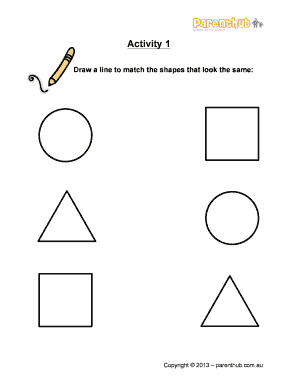Consent Letter For Children Travelling Abroad ensures smooth international travel. SIXT.VN offers travel solutions in Vietnam, providing guidance and services to make your family’s journey seamless. Explore our services for hassle-free travel planning, airport transfers, hotel bookings, and tours!
1. When Is a Consent Letter Needed for Children Traveling Abroad?
A consent letter is needed for children travelling abroad alone, with only one parent/guardian, with friends/relatives, or with a group. This letter proves permission from non-accompanying parents or guardians, streamlining international travel.
When a child travels internationally without both parents or legal guardians, a consent letter becomes essential. This document serves as evidence that the child has the permission of every parent or guardian who is not accompanying them on the trip. Whether the child is travelling alone, with one parent, with relatives, or as part of a group (like a sports team or school trip), a consent letter can help prevent delays and questions from immigration authorities.
The necessity of a consent letter arises from international child protection laws and conventions designed to prevent international child abduction. Immigration officials and airline personnel may request this letter to ensure that the child is not being taken out of the country against the will of a parent or guardian. By providing a clear, signed consent letter, you can alleviate concerns and facilitate smoother passage through border control.
Consider these scenarios where a consent letter is crucial:
- Traveling Alone: When a child is flying solo, the consent letter confirms that their travel is authorized by their parents or guardians.
- Traveling with One Parent: Even if a child is travelling with one parent, a consent letter from the other parent can prevent issues, especially if the parents are divorced or separated.
- Traveling with Relatives or Friends: When a child is in the care of someone who is not their parent or guardian, the consent letter establishes that the caregivers have permission to travel with the child.
- Group Travel: For children participating in group activities such as sports teams, school trips, or musical groups, a consent letter ensures that the organizers have the necessary permissions.
SIXT.VN understands these complexities and offers comprehensive support for families planning international travel. Our services include assisting with necessary documentation, providing transportation solutions, and ensuring your trip is as smooth and stress-free as possible. Contact us for tailored advice and support to meet your specific travel needs. Address: 260 Cau Giay, Hanoi, Vietnam. Hotline/Whatsapp: +84 986 244 358. Website: SIXT.VN.
2. Is a Consent Letter a Legal Requirement in Vietnam?
No, a consent letter isn’t legally required in Vietnam, but it simplifies travel for Canadian children entering or exiting, as it may be requested by immigration or airline officials.
While Vietnam does not legally mandate a consent letter for entry or exit, possessing one can greatly streamline travel, particularly for children. Immigration officials at Vietnamese border crossings have the discretion to request documentation proving that a child has permission to travel from all parents or legal guardians. A well-prepared consent letter serves as a readily available confirmation, reducing the likelihood of delays or further questioning.
Moreover, airlines operating flights to and from Vietnam may also require a consent letter as part of their due diligence procedures. This is especially true for unaccompanied minors or children travelling with someone other than their parents or legal guardians. Airlines aim to prevent potential issues related to international child abduction, and a consent letter can satisfy their requirements, ensuring a smoother check-in and boarding process.
Even if you are traveling with a child for whom you have always been the sole parent or guardian, it’s beneficial to carry documentation that proves your status. A copy of a long-form birth certificate identifying you as the only parent is advisable. Similarly, if the other parent is deceased and you have full custody, bring a copy of the death certificate to avoid any complications.
To ensure compliance with Vietnamese immigration policies, it’s always prudent to check the latest travel advisories and entry requirements. These can be found on official government websites or by contacting the nearest Vietnamese embassy or consulate in your country. Being well-prepared with the necessary documents and information is key to a hassle-free travel experience.
SIXT.VN offers comprehensive travel support services designed to make your trip to Vietnam as smooth as possible. We provide detailed guidance on required documentation, assist with airport transfers, and offer tailored travel solutions to meet your specific needs. Our expertise ensures you are fully prepared for your journey. Address: 260 Cau Giay, Hanoi, Vietnam. Hotline/Whatsapp: +84 986 244 358. Website: SIXT.VN.
3. What Should Be Included in a Child Travel Consent Letter?
A child travel consent letter should include the child’s name, parents’ contact information, travel details, and the accompanying person’s information. This ensures clarity and legitimacy for international travel.
Crafting a comprehensive child travel consent letter involves including specific details that confirm the legitimacy of the child’s travel. This letter serves as a critical document that border officials and airline staff may request to ensure the child has permission to travel internationally from all parents or legal guardians. The more detailed and clear the letter, the smoother the travel process will be.
Here are the key elements that should be included in a child travel consent letter:
-
Child’s Full Name and Date of Birth: Clearly state the child’s full name as it appears on their passport and their date of birth to avoid any confusion.
-
Parents’ or Guardians’ Full Names and Contact Information: Include the full names, addresses, phone numbers, and email addresses of all parents or legal guardians. This allows authorities to contact them if necessary to verify consent.
-
Travel Details: Provide a comprehensive overview of the travel plans, including:
- Destination: Specify the countries the child will be visiting.
- Travel Dates: Include the exact start and end dates of the trip.
- Flight Information: If applicable, add flight numbers and airline details.
- Accommodation Details: Mention where the child will be staying, including addresses and contact information for hotels or residences.
-
Accompanying Person’s Information:
- Full Name and Relationship: State the full name of the person accompanying the child and their relationship to the child (e.g., aunt, friend, group leader).
- Contact Information: Include the accompanying person’s address, phone number, and email address.
-
Consent Statement: A clear statement granting permission for the child to travel, such as “I/We hereby give my/our consent for [Child’s Full Name] to travel to [Destination] from [Start Date] to [End Date] with [Accompanying Person’s Full Name].”
-
Signature and Date: Each parent or guardian who is not accompanying the child should sign and date the letter in the presence of a notary public or commissioner of oaths.
-
Notarization: It is highly recommended that the letter be notarized. A notary public can verify the identities of the signatories and witness the signing of the document, adding an extra layer of legitimacy.
For example, a well-structured consent letter might look like this:
“I, Jane Doe, grant consent for my daughter, Emily Doe, born on March 15, 2010, to travel to Vietnam from July 1, 2024, to July 15, 2024, with her aunt, Sarah Smith. I can be reached at 123 Main Street, Anytown, USA, phone number +1-555-123-4567, and email [email protected].”
SIXT.VN understands the importance of detailed documentation for international travel. We offer expert consultation and support in preparing consent letters, ensuring that all necessary information is accurately included. Our services are designed to simplify the travel planning process for families. Contact us for personalized assistance. Address: 260 Cau Giay, Hanoi, Vietnam. Hotline/Whatsapp: +84 986 244 358. Website: SIXT.VN.
4. Who Needs to Sign the Consent Letter?
Both parents, legal guardians, or a child welfare agency representative must sign the consent letter, depending on custody arrangements and care status. Notarization is strongly recommended for added validity.
Determining who needs to sign a consent letter for a child traveling abroad depends on the child’s legal custody and care arrangements. Ensuring the correct individuals sign the letter is crucial for its validity and acceptance by immigration authorities and airline personnel.
Here’s a breakdown of who should sign the consent letter in various scenarios:
- Married or Common-Law Parents: In situations where parents are married or in a common-law relationship and not all parents are accompanying the child, all non-accompanying parents should sign the consent letter. This affirms that both parents are aware of and consent to the child’s travel plans.
- Separated or Divorced Parents: For separated or divorced parents, the requirements depend on the custody agreement. Generally, the parent who has custody, decision-making responsibility, or guardianship of the child (depending on regional laws) should sign the letter. It’s also important to consult any court orders or agreements, as they may specify who needs to provide consent for international travel.
- Temporary Care: If the child is in temporary care, such as foster care, the consent letter must be signed by the appropriate child welfare agency representative. This individual has the legal authority to grant consent for the child’s travel with the designated accompanying person.
- Deceased Parent: In cases where one parent is deceased, the surviving parent should sign the consent letter. Additionally, it’s advisable to carry a copy of the deceased parent’s death certificate to provide further verification, especially if the child is traveling alone or with someone other than the surviving parent.
In all scenarios, notarization of the consent letter is highly recommended. A notary public verifies the identities of the signatories and witnesses the signing of the document, adding an extra layer of legitimacy. Border officials are more likely to accept a notarized letter, as it reduces the potential for fraud or coercion.
For instance, if Jane and John are divorced, and Jane has sole custody of their daughter Emily, Jane would be the one to sign Emily’s consent letter. If John had visitation rights, it would still be Jane’s signature required unless the court order specifies otherwise.
SIXT.VN understands the complexities of family travel and documentation. We offer expert guidance to help you determine who needs to sign the consent letter based on your specific circumstances. Our services include preparing and notarizing consent letters, ensuring you have the necessary documentation for smooth and stress-free travel. Contact us for personalized assistance. Address: 260 Cau Giay, Hanoi, Vietnam. Hotline/Whatsapp: +84 986 244 358. Website: SIXT.VN.
5. What if There Is a Risk of International Child Abduction?
Consult a lawyer and proceed with extreme caution before signing a consent letter if there’s a risk of abduction. Protecting the child’s welfare is paramount.
If there is a credible risk of international child abduction, exercising extreme caution before signing a consent letter is essential. The primary concern should always be the child’s welfare and safety. Granting permission for international travel through a consent letter can have serious implications if there is a possibility that the accompanying parent or guardian might not return the child to their home country.
Here are critical steps to take if you suspect a risk of international child abduction:
- Consult with a Lawyer: Seek legal advice from a lawyer specializing in international child abduction. An attorney can provide guidance on your rights, the legal implications of signing a consent letter, and strategies to protect your child.
- Do Not Sign the Consent Letter Lightly: If there is a legitimate concern, do not feel pressured to sign the consent letter. Explain your concerns to the other parent or guardian and attempt to find a resolution that ensures the child’s safety.
- Seek a Court Order: Consider seeking a court order that restricts the child’s international travel. A court can issue an order preventing the child from leaving the country without the express permission of both parents or a judge.
- Contact Government Authorities: Inform relevant government authorities, such as child protective services or law enforcement agencies, about your concerns. They may be able to provide assistance and resources.
- Gather Evidence: Collect any evidence that supports your concern about potential abduction. This might include threatening statements, suspicious travel plans, or past behavior that indicates a risk.
- Consider Supervised Visitation: If visitation is allowed, consider requesting supervised visitation to ensure the child’s safety during visits with the potentially abducting parent.
- Communicate with the Child: If appropriate for the child’s age, have open and honest conversations about the importance of returning home and the potential dangers of not doing so.
According to the U.S. Department of State, international parental child abduction is a serious issue that affects thousands of families each year. The Hague Convention on the Civil Aspects of International Child Abduction is an international treaty designed to provide a legal framework for the return of abducted children to their country of habitual residence. However, not all countries are signatories to this convention, which can complicate efforts to recover a child.
For instance, if John and Mary are divorced, and Mary suspects that John might take their child to a country that is not a signatory to the Hague Convention, she should immediately consult with a lawyer to seek a court order preventing John from taking the child out of the country.
SIXT.VN prioritizes the safety and well-being of children. While we provide travel support services, we strongly advise seeking legal counsel if there is any risk of international child abduction. Our role is to ensure that you have the information and resources needed to make informed decisions. Contact us for assistance with travel planning, but remember to consult legal experts for matters concerning child custody and abduction risks. Address: 260 Cau Giay, Hanoi, Vietnam. Hotline/Whatsapp: +84 986 244 358. Website: SIXT.VN.
6. Does the Definition of a Child Vary From Country to Country?
Yes, the definition of a child varies by country; therefore, any individual under 19 should carry a consent letter to avoid complications during international travel.
The legal definition of a child can vary significantly from one country to another, making it essential to consider these differences when planning international travel for minors. While some countries define a child as anyone under the age of 16, others extend this to 18 or even 19. These variations can impact the documentation required for a young person to enter or exit a country, particularly if they are traveling without both parents or legal guardians.
To avoid potential complications, it is generally recommended that anyone under the age of 19 carry a consent letter when traveling internationally. This letter provides documented proof that the child has permission from their parents or guardians to travel, regardless of the specific age definition in the destination country.
Here’s why this precaution is important:
- Inconsistent Age Definitions: Countries have different legal thresholds for determining when a person is considered an adult. For example, in some countries, an 18-year-old might be considered an adult, while in others, they are still considered a minor for certain legal purposes.
- Immigration Policies: Immigration officials often use age as a factor in determining whether a traveler requires additional documentation. A consent letter can preemptively address any concerns about a minor traveling without proper authorization.
- Airline Regulations: Airlines may also have their own rules regarding unaccompanied minors or young travelers, and a consent letter can help ensure compliance with these regulations.
Consider these examples:
- In Canada, the age of majority is 18 or 19, depending on the province.
- In the United States, the age of majority is generally 18, but certain state laws may treat individuals under 21 differently, especially regarding alcohol consumption.
- In many European countries, the age of majority is 18.
To ensure smooth travel, it’s always best to err on the side of caution and have a consent letter for any traveler under 19. This letter should include the child’s full name, date of birth, the names and contact information of the parents or guardians, travel details, and the name and relationship of the accompanying person.
SIXT.VN understands the importance of being prepared for international travel, especially when children are involved. We provide comprehensive travel support services, including guidance on necessary documentation and age-related travel requirements. Our goal is to ensure that your trip is as smooth and stress-free as possible. Contact us for personalized assistance. Address: 260 Cau Giay, Hanoi, Vietnam. Hotline/Whatsapp: +84 986 244 358. Website: SIXT.VN.
7. How Can a Consent Letter Be Used Outside of Vietnam?
A consent letter may not be sufficient in some countries due to varying entry/exit requirements. Always check travel advisories and contact the destination’s embassy for specifics.
Using a consent letter outside of Vietnam requires understanding that each country has its own unique set of entry and exit requirements for children. While a consent letter is a valuable document to have, it may not always be considered sufficient by a country’s immigration authorities. Therefore, thorough preparation and verification are essential to ensure smooth international travel for children.
Here are key points to consider when using a consent letter outside of Vietnam:
- Varying Entry and Exit Requirements: Different countries have different rules regarding the documentation required for children to enter or exit their borders. Some countries may accept a consent letter as sufficient evidence of parental permission, while others may require additional documentation, such as notarized affidavits or court orders.
- “Deemed Citizen” Status: In some countries, a child may be considered a citizen if one or both parents are citizens of that country, regardless of where the child was born. As a “deemed citizen,” the child may be subject to the same entry and exit requirements as other citizens, which could include additional documentation or restrictions.
- Embassy and Consulate Consultation: Before traveling, it is crucial to check the entry and exit requirements of the destination country. This can be done by consulting the travel advisories issued by your home country’s government or by contacting the nearest embassy or consulate of the destination country. These sources can provide specific information on the documents required for children traveling internationally.
- Travel Advisories: Travel advisories often include detailed information on entry and exit requirements, as well as any specific considerations for children traveling without both parents or legal guardians. Reviewing these advisories can help you understand what to expect at border crossings.
For example, if a child is traveling from Canada to Vietnam with a consent letter, Vietnamese immigration authorities may accept the letter as sufficient evidence of parental permission. However, if the child is traveling to another country with stricter requirements, the consent letter alone may not be enough.
To ensure compliance with international travel regulations, it’s always best to:
- Check the latest travel advisories for your destination country.
- Contact the embassy or consulate of your destination country for specific requirements.
- Prepare all necessary documentation, including the consent letter, birth certificate, and any other documents required by the destination country.
SIXT.VN provides comprehensive travel support services to help you navigate the complexities of international travel. We can assist you in gathering the necessary information and preparing the required documentation for your trip. Contact us for personalized assistance. Address: 260 Cau Giay, Hanoi, Vietnam. Hotline/Whatsapp: +84 986 244 358. Website: SIXT.VN.
8. Is a Witness Signature Required on a Child Travel Consent Letter?
A witness signature is not mandatory, but a notary public’s signature is highly recommended to enhance the letter’s credibility with border officials.
While a witness signature is not strictly required on a child travel consent letter, having the letter witnessed by a notary public is highly recommended. A notary public’s signature adds an extra layer of credibility and legitimacy to the document, making it more likely to be accepted by border officials and airline personnel.
Here’s why notarization is beneficial:
- Verification of Identity: A notary public is authorized to verify the identities of the individuals signing the consent letter. This helps to prevent fraud and ensures that the signatures are genuine.
- Witnessing the Signing: The notary public witnesses the signing of the consent letter, attesting that the signatures were made voluntarily and without coercion. This adds to the credibility of the document.
- Official Seal and Signature: A notarized consent letter includes the notary public’s official seal and signature, which are recognized by government agencies and border control authorities.
- Reduced Scrutiny: Border officials are more likely to accept a notarized consent letter without further questioning, as it has been verified by a trusted third party.
Any adult can serve as a witness for the signing of a consent letter, but a notary public is a more authoritative option. A notary public is an official authorized by the state or government to administer oaths, witness signatures, and certify documents.
To notarize a consent letter, you will need to:
- Find a Notary Public: Locate a notary public in your area. Banks, law firms, and government offices often have notaries on staff.
- Bring Identification: Each parent or guardian signing the consent letter will need to bring a valid photo ID, such as a driver’s license or passport.
- Sign the Letter in the Notary’s Presence: Sign the consent letter in the presence of the notary public.
- Pay the Notary Fee: Notaries typically charge a small fee for their services.
By having your child travel consent letter notarized, you can ensure that it is as credible and legitimate as possible, which can help to prevent delays and complications during international travel.
SIXT.VN understands the importance of proper documentation for international travel. We offer notary services to assist you in preparing and notarizing your child travel consent letter. Our team can help you ensure that your documents are complete and accurate, so you can travel with confidence. Contact us for personalized assistance. Address: 260 Cau Giay, Hanoi, Vietnam. Hotline/Whatsapp: +84 986 244 358. Website: SIXT.VN.
9. Can I Use One Consent Letter for Multiple Children?
Children from the same family traveling together can be listed on one consent letter, but separate letters are advised if they’re traveling separately for part of the trip.
Whether you can use one consent letter for multiple children depends on their travel arrangements. If children from the same family are traveling together for the entire trip, they can typically be listed on a single consent letter. However, if they will be traveling separately for any part of the journey, separate consent letters are recommended for each child.
Here’s a breakdown of when to use one or separate consent letters:
- Traveling Together for the Entire Trip: If all children from the same family are traveling together to the same destination and returning together, you can include all of their names and details on one consent letter. This simplifies the process and ensures that all necessary information is provided in a single document.
- Traveling Separately for Part of the Trip: If the children will be traveling separately for any portion of the trip, such as different departure dates, destinations, or return dates, it is best to prepare separate consent letters for each child. This ensures that each child has a consent letter that accurately reflects their individual travel plans.
When preparing a consent letter for multiple children, be sure to include the following information for each child:
- Full Name
- Date of Birth
- Passport Information
- Travel Dates and Destinations
- Accompanying Person’s Name and Contact Information
For example, if Jane and John Doe have two children, Emily and Michael, and both children are traveling to Vietnam with their aunt Sarah Smith for a two-week vacation, they can be listed on the same consent letter. However, if Emily is staying in Vietnam for an additional week while Michael returns home with Sarah, Emily and Michael should have separate consent letters.
Using separate consent letters when children are traveling separately ensures that each child has the appropriate documentation for their specific travel plans, reducing the risk of confusion or delays at border crossings.
SIXT.VN offers comprehensive travel support services to help you prepare the necessary documentation for your family’s international travel. We can assist you in creating consent letters for single or multiple children, ensuring that all required information is accurately included. Contact us for personalized assistance. Address: 260 Cau Giay, Hanoi, Vietnam. Hotline/Whatsapp: +84 986 244 358. Website: SIXT.VN.
 Preparing travel documents for multiple children
Preparing travel documents for multiple children
10. Should a Consent Letter Have Specific Dates or Be Open-Ended?
A consent letter should include specific travel dates for clarity. Consult a lawyer for open-ended letters to ensure legal compliance and protect the child’s interests.
Whether a consent letter should have specific dates or be open-ended depends on the travel arrangements and the relationship between the parents or guardians. In most cases, it is best to include specific travel dates in the consent letter to provide clarity and avoid potential issues with border officials. However, there may be situations where an open-ended consent letter is appropriate, such as for frequent cross-border trips.
Here’s a breakdown of when to use specific dates or an open-ended consent letter:
- Specific Travel Dates: For most international travel scenarios, the consent letter should include specific travel dates, including the departure date, return date, and the destination(s) the child will be visiting. This provides a clear and concise record of the child’s travel plans and helps to prevent confusion at border crossings.
- Open-Ended Consent Letter: In certain situations, an open-ended consent letter may be appropriate. This type of letter does not include specific travel dates and may be used for frequent cross-border trips or when the exact travel dates are unknown. However, it is important to consult with a lawyer before using an open-ended consent letter to ensure that it complies with all applicable laws and regulations.
An open-ended consent letter may be suitable in the following situations:
- Frequent Cross-Border Trips: If the child frequently travels across the border, such as for visitation with a parent who lives in another country, an open-ended consent letter may simplify the process.
- Unpredictable Travel Dates: If the exact travel dates are unknown, such as for emergency travel or when the child’s travel plans are subject to change, an open-ended consent letter may provide flexibility.
When preparing an open-ended consent letter, be sure to include the following information:
- Child’s Full Name and Date of Birth
- Parents’ or Guardians’ Full Names and Contact Information
- Accompanying Person’s Name and Contact Information
- Statement of Consent for the Child to Travel Internationally
- Any Restrictions or Limitations on the Child’s Travel
- Signature and Date of Each Parent or Guardian
It is also important to have the open-ended consent letter reviewed by a lawyer to ensure that it complies with all applicable laws and regulations and that it adequately protects the child’s interests.
SIXT.VN offers comprehensive travel support services to help you prepare the necessary documentation for your family’s international travel. We can assist you in creating consent letters with specific dates or, if appropriate, open-ended consent letters. Contact us for personalized assistance and legal guidance. Address: 260 Cau Giay, Hanoi, Vietnam. Hotline/Whatsapp: +84 986 244 358. Website: SIXT.VN.
Planning a trip to Vietnam with your family? Let SIXT.VN handle the details. We offer a range of services, including airport transfers, hotel bookings, and tailored tours to make your visit unforgettable. With our support, you can focus on enjoying the rich culture and beautiful landscapes of Vietnam, knowing that all your travel arrangements are in expert hands.
FAQ: Consent Letter for Children Travelling Abroad
1. What is a consent letter for children traveling abroad?
A consent letter is a document proving a child has permission to travel internationally from parents or guardians who aren’t accompanying them.
2. Is a consent letter legally required for international travel?
While not always legally required, it’s often requested by immigration and airline officials to prevent international child abduction.
3. What information should be included in a consent letter?
Include the child’s name, parents’ contact details, travel dates, destination, and accompanying person’s information.
4. Who should sign the consent letter?
All non-accompanying parents or legal guardians with custody or decision-making responsibility should sign.
5. Does a consent letter need to be notarized?
Notarization isn’t mandatory but is highly recommended to increase the letter’s credibility with border officials.
6. Can I use one consent letter for multiple children?
Yes, if they’re traveling together. Separate letters are needed if they travel separately at any point.
7. What if travel dates are uncertain?
Include specific dates if possible. Consult a lawyer for open-ended letters covering multiple or uncertain trips.
8. How long is a consent letter valid?
Validity depends on the dates specified in the letter. Open-ended letters should be reviewed periodically.
9. What should I do if there’s a risk of child abduction?
Consult a lawyer immediately and proceed with extreme caution before signing any consent letter.
10. Are there any exceptions to needing a consent letter?
If you have sole custody with proof (like a birth certificate or death certificate), a consent letter from the other parent may not be needed, but it’s still recommended.







